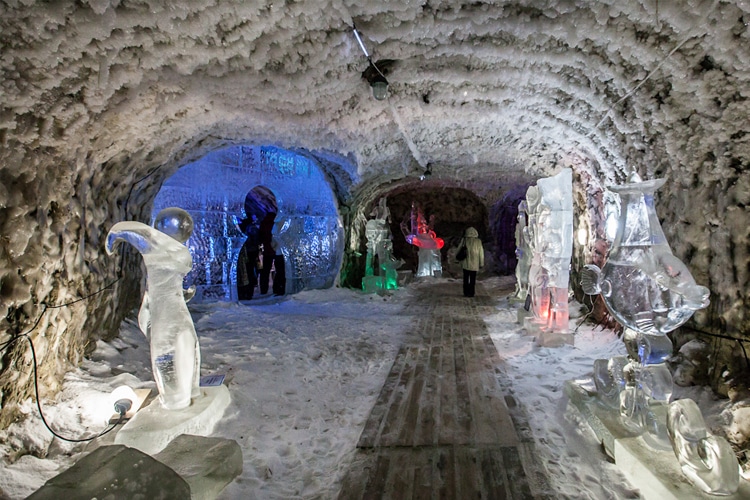
Yakutsk is the city and capital of the Sakha Autonomous Republic (Yakutia) on the Lena River in Russia’s far north-east. The site was established in 1922 as an autonomous republic of the Soviet Union; It is now Russia’s largest republic. It is located on the Lena River. AD 6-10. Saha (Yakut), a people consisting of a mixture of Turkish communities and local tribes who migrated from the south in the 17th century. It joined the Russian state in the first half of the century.
Yakutsk, the largest city of the republic, was the first settlement in history as a small wooden fortress built by Russian Cossacks who discovered Siberia in 1632. In 1638, the Yakutsk province was established and the territory was opened to Russians who settled in towns along the middle Lena River. 19. By the 19th century, most nomadic Saharans had adopted a sedentary lifestyle.
Residential

In 1632, a detachment of the captain of the Yenisei, Petr Beketov, during the exploration of the banks of the Lena River, decided to build the Yakutsk (Lenskiy) fortress on this site, the fortress became the center of the newly formed Yakut province. Due to frequent floods in the 1640s, the fortress Tuymaad moved to the current location of Yakutsk in the valley. The name of the settlement was changed to Yakutsk in 1643. In 1822 Yakutsk became a “oblast” city, and in 1851 Yakutsk became the center of the newly recognized independent Yakutia region.
Social and Economic Development

From the middle of the 17th century, the government of the Russian empire chose Yakutia as a suitable place for the exile of revolutionaries, because it was seen as a “prison without guards” due to its harsh climate. Representatives of three generations of Russian revolutionaries, from Decembrists to Marxist-Leninists, were exiled in Yakutsk. Some of their descendants still live in Yakutsk today. The economic life of Yakutsk started from the industrial development of Yakutia in the XIX-XX centuries, especially after gold mining along the Vitim River and its tributaries. At that time the city became the industrial center of the region and since then the city has expanded and grown significantly.
The region’s remarkable socio-economic growth determined the status of the city. It has become the administrative, political, cultural and scientific center of the entire Far Eastern region of Russia. A particularly active period of development of Yakutsk occurred during the I. Kraft Governorate in 1906-1913, during which a power station, a telephone station, various museums were built, and the department of the Imperial Geographical Institution was created.
How Yakutsk Gained Autonomy
After the Civil War, the Soviet regime was established in the Yakut region in 1918. By October 1921, Platon Oyunsky had prepared a draft of the “Declaration of the Rights and Duties of the Workers of the Yakut Autonomous Soviet Socialist Republic” and the “Declaration of the Rights and Duties of the Workers of the Yakut Autonomous Soviet Socialist Republic”. In 1922, the establishment of the Republic was completed and based on these documents, the Yakut Autonomous Soviet Socialist Republic was established on April 27, 1922, whose capital was Yakutsk. It was the first state in the history of the Sakha people. In the 1930s, the first scientific research institute was established in the city. With this, the Republic reached a new stage in public education and science. Today it is a large city with a population of more than 250,000.
Architectural

Yakutsk city architecture is a mixture of modern high-rise buildings, Soviet-era blocks and old wooden houses. The city is built on permafrost, a layer of frozen soil hundreds of meters deep that never melts. Most structures are on stilts so that the heat from the building does not melt the underlying layers.
Yakutsk Weather

In winter, Yakutsk is shrouded in “settlement” fog, which occurs when the weather is very cold and warm air from houses, people and cars cannot rise. It is not a good idea to wander the streets of the city during the winter months when the temperature drops below -40C.
Yakutsk is the capital city of Yakutia, where 1.2 million square miles are covered in snow and ice, diamonds and gold, the average temperature is below freezing and the winter is considered mild with just under 40 degrees Celsius. Forty percent of Yakutia lies above the Arctic Circle, and about 1 million people live there.
December, January and February are the coldest months, with temperatures often below -50C.
Tourism

In addition to being so cold, the city has winter tourism. The Natural History Museum, which covers both human and flora and fauna history of the region, University Archeology and Ethnography Museum, Mammoth Museum, Fine Arts Museum are the main tourist attractions.
Moscow time +6 hours The distance between Moscow and Yakutsk is -8468 km. If you plan to go to Yakutsk in winter, you should take with you the warmest clothes possible; fur hats, woolen scarves, gloves, thick boots, winter coats. Locals wear long fur coats, reindeer fur boots with thick felt soles, fur hats.







